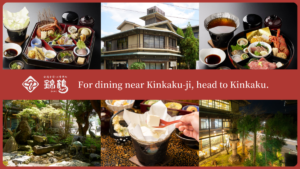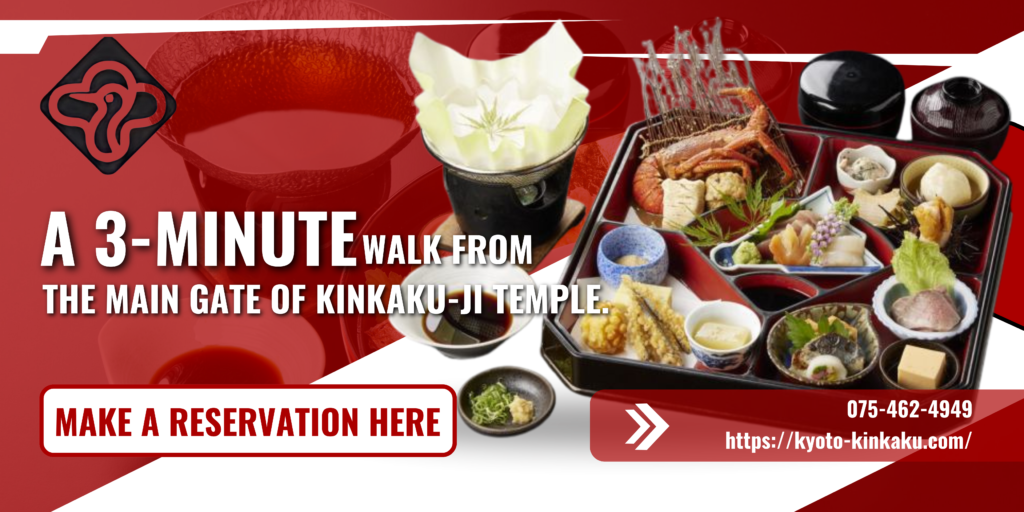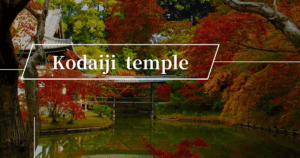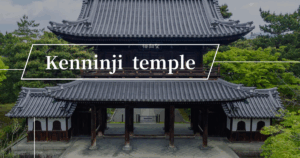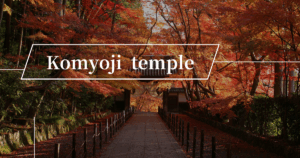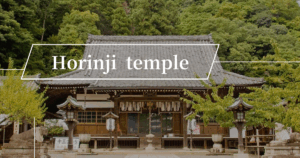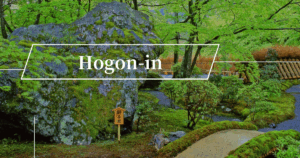Yasaka Shrine, located in Higashiyama in the ancient capital of Kyoto, is a sacred space known worldwide as the venue for the Gion Festival.
The beautiful scenery created by the vermilion shrine building and lush green grounds attracts many visitors throughout the year.
Believed to bring good fortune in matchmaking, warding off evil, and business prosperity, this shrine, affectionately known to locals as “Gion-san,” is steeped in over 1,000 years of history and tradition.
In this article, we’ll take a look at the history, highlights, and access to Yasaka Shrine.
What kind of place is Yasaka Shrine?
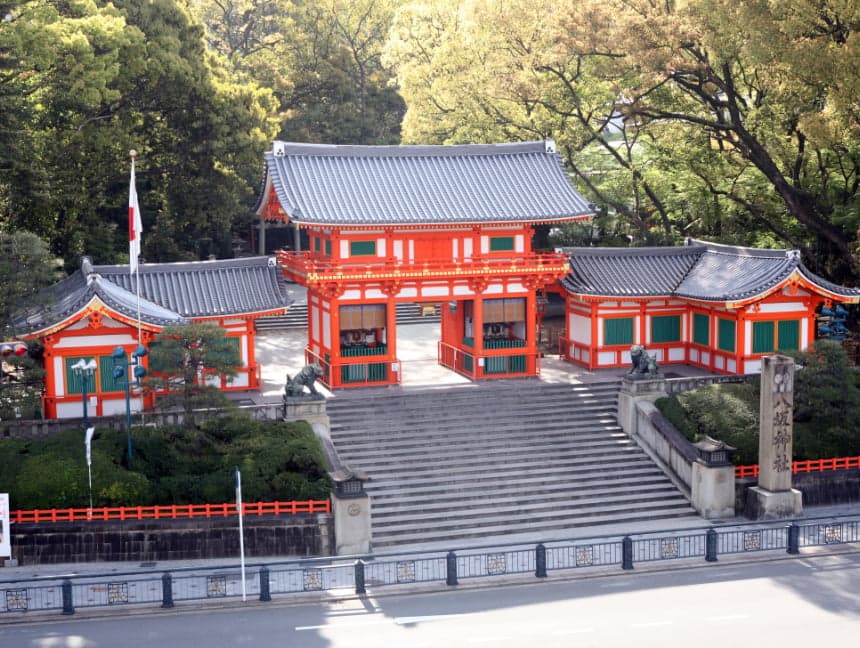
Yasaka Shrine, located in Gion-cho, Higashiyama-ku, Kyoto, is one of Japan’s most famous shrines.
Its official name is “Yasaka Shrine,” but locals affectionately call it “Gion-san.”
As the head shrine of the approximately 3,000 Yasaka Shrines across the country, it enshrines Gozu Tenno (Susanoo-no-mikoto) as its main deity and is said to grant protection from misfortune, recovery from illness, and prosperity in business .
Its founding dates back to the early Heian period about 1,300 years ago, making it a historic shrine with a long history.
In particular, the Gion Festival, held every July, is known both in Japan and overseas as one of Japan’s three major festivals, and the gorgeous and splendid procession of floats brightens up Kyoto’s summer.
The temple grounds, which are beautiful in every season, are characterized by the vermilion colored shrine buildings such as the Nishi-romon Gate, main hall, and dance hall, and are popular as a spot to view cherry blossoms and autumn leaves.
Additionally, being located at the gateway to Higashiyama, it offers good access to surrounding tourist spots such as Kiyomizu-dera Temple and Kodai-ji Temple.
The History of Yasaka Shrine
Yasaka Shrine is a historic shrine that has been with us throughout Japanese history.
From the Heian period to the present day, it has undergone many changes but has remained beloved by people as a spiritual pillar of Kyoto.
We will explore the charm of Yasaka Shrine while unraveling its long history.
Founding and Gozu Tenno faith
The origins of Yasaka Shrine date back to 656 (the second year of the reign of Empress Saimei) in the early Heian period.
It was originally called Gion Kanshin-in and was founded as a shrine dedicated to Gozu Tenno, the god who wards off epidemics.
Gozu Tenno was later syncretized with Susanoo-no-Mikoto and is currently the main deity.
Particularly during the Heian period, when epidemics were rampant, the shrine attracted devout faith from the imperial court and common people as a place of prayer for the elimination of epidemics thanks to the divine power of Gozu Tenno.
He was also revered as the patron deity of agriculture and commerce, and occupied an important position as the guardian deity of the eastern part of the capital.
The development of the Gion Festival and Muromachi culture
The origin of the current Gion Festival dates back to 869 (Jogan 11) during the Heian period, when an epidemic was spreading across the country and it began as the Goryoe festival.
It began with the belief that carrying a portable shrine through the town would ward off epidemics, and in the Muromachi period, with the support of wealthy merchants, magnificent and spectacular Yamahoko floats appeared.
Particularly during the time of Shogun Ashikaga Yoshimitsu of the Muromachi shogunate, the Gion Festival became established as a major event that colored Kyoto’s summers.
The floats incorporated cutting-edge cultural elements of the time, such as Nishijin textiles, gold leather, and Nanban dolls, and the festival also came to have the aspect of an arts festival that brought together the best of Muromachi culture.
From this time on, the Gion Festival evolved beyond being merely a religious event into a festival symbolizing Kyoto’s cultural identity.
The Meiji Restoration and its Present Day Heritage
In the Meiji era, the name of the shrine was changed from “Gion Shrine” to “Yasaka Shrine” in accordance with the Shinbutsu Bunri Rei (law to separate Shinto and Buddhism).
The enshrined deity has also been officially changed from Gozu Tenno to Susanoo.
During the turmoil of the Meiji Restoration, the shrine’s financial base weakened and the survival of the Gion Festival was at risk, but the tradition was preserved thanks to the efforts of local residents and merchants.
The scale of the festival was scaled down during World War II, but it was gradually revived after the war.
In 1979, the Yamahoko festival was registered as a UNESCO Intangible Cultural Heritage and has received high praise internationally.
Today, Yasaka Shrine and the Gion Festival are carefully preserved as a symbol of unity in the local community and as one of Kyoto’s most representative tourist attractions.
What to see at Yasaka Shrine
Yasaka Shrine has many attractions that attract visitors.
From the vermilion shrine buildings to the beautiful gardens and traditional events held throughout the year, it is a place where each visitor can have a special and memorable experience.
Here we will introduce three highlights that you should pay particular attention to when visiting Yasaka Shrine.
What to see at Yasaka Shrine
- The architectural beauty of the main hall, dance hall, and west tower gate
- The God of Matchmaking, “Utsukushigozensha”
- Seasonal scenery of Ekijinja Shrine and its grounds
The architectural beauty of the main hall, dance hall, and west tower gate

The architecture of Yasaka Shrine is a beautiful symbol of Kyoto’s historical landscape.
In particular, the main shrine building, which has been designated an Important Cultural Property, is a gorgeous eight-building shrine building decorated in vermilion and gold , combining strength and elegance.
The dance hall also serves as a stage for rituals and votive dances, and its vermilion-painted columns and white plaster walls create an exquisite contrast.
The Nishi-romon Gate on the west side is a vermilion two-story gate known as the main gate of Yasaka Shrine. Its appearance, which harmonizes with the Higashiyama scenery, is beloved by many photographers.
These buildings change with the seasons, and are especially beautiful during the cherry blossom and autumn foliage seasons.
The God of Matchmaking, “Utsukushigozensha”
Utsukushi Gozensha Shrine, located on the south side of the grounds of Yasaka Shrine, is popular as a power spot for love fulfillment and matchmaking.
The shrine enshrines Kushinadahime-no-Mikoto, the wife of the main deity Susanoo-no-Mikoto, and as her name suggests, she is known as the deity in charge of “beauty.”
It is said that the shrine also grants blessings for beauty and improvement in the arts, and is especially worshipped by young women.
The shrine is distinctive for the figure of a white fox painted on its vermilion door, and there is a unique way of praying whereby visitors put their hands together and then look at their palms as if they were a mirror to confirm their own beauty.
Additionally, in the area surrounding Utsukushigozensha Shrine, there is a shrine office that sells many matchmaking charms and ofudas, and the shrine is bustling with people who come to pray for love.
Seasonal scenery of Ekijinja Shrine and its grounds
Ekijinja Shrine, located to the north of Yasaka Shrine, has long been worshipped as a place of prayer for the elimination of epidemics.
It originates from the faith in Gozu Tenno and is said to have the power to heal illness and ward off evil.
In front of the main shrine there is a spring called “Yasaka no Mizu”, and it is said that if you purify your hands and mouth with this water, you will not get sick.
The temple grounds offer beautiful scenery throughout the year, with approximately 40 cherry trees in full bloom in the spring, the fresh green leaves of the willows along the Gion Shirakawa River on the north side of the temple grounds in early summer, and the red and yellow autumn leaves in autumn delighting the eyes of visitors.
Especially at night when it is lit up, it is enveloped in a fantastical atmosphere, and you can feel a different charm from the daytime.
What is the best season to visit Yasaka Shrine?
Yasaka Shrine is a tourist spot that can be enjoyed all year round, but the most recommended season is during the Gion Festival in July.
This is one of Japan’s three major festivals, held over a month, and you can experience traditional events such as the Yamahoko procession and mikoshi parade up close.
In addition, during the spring cherry blossom season (late March to early April), the approximately 40 cherry trees within the temple grounds are in full bloom, and the nighttime illumination of the “Gion Weeping Cherry Blossoms” is also an attractive sight.
In the autumn foliage season (mid- to late November), the contrast between the vermilion color of the shrine building and the autumn leaves is beautiful, and can be enjoyed in combination with sightseeing in Higashiyama.
Additionally, the New Year’s Eve Festival held from December 31st to January 1st is also popular, with many visitors coming to pray at the shrine for the first time in the new year.
If you want to avoid the crowds, we recommend visiting in May or June when the new leaves are in bloom.
Access to Yasaka Shrine
Yasaka Shrine is located in Gioncho, Higashiyama Ward, Kyoto City, and is in the center of Kyoto’s tourist area, making it easily accessible from various directions.
The main tourist attractions can be reached by public transport.
We will introduce how to get to Kyoto from major tourist spots so that even first-time visitors can arrive there without getting lost.
Access from Kyoto Station
To get to Yasaka Shrine from Kyoto Station, it is convenient to take a city bus or subway.
If taking a city bus, take bus number 206 bound for “Gion” from Kyoto Station Bus Terminal A1 stop, ride for about 20 minutes, get off at the “Gion” bus stop, and then walk for about 5 minutes to arrive at the hotel.
You can also get off at Gion on bus number 100 bound for Ginkakuji-Ritsumeikan University or bus number 110 bound for Kujo Shako.
If you take the subway, take the Karasuma Line to Karasuma-Oike Station, then transfer to the Tozai Line and get off at Higashiyama Station. It is about a 10-minute walk from the exit.
If you take a taxi, it will take about 15 minutes from Kyoto Station and cost around 1,500 yen.
Access from Kinkakuji Temple
The most common way to get from Kinkakuji Temple to Yasaka Shrine is by city bus.
From the Kinkakuji bus stop, take city bus number 204 bound for “Gion/Ginkakuji” or number 205 bound for “Shugakuin/Iwakura”, get off at the “Gion” bus stop, and from there it is about a 5-minute walk to Yasaka Shrine.
The journey takes approximately 30 minutes.
Also, if you are after enjoying sightseeing in northwestern Kyoto, such as Kitano Tenmangu Shrine or Ryoanji Temple, city bus number 101 to Gion-Okazakimichi is also convenient.
A taxi will take about 20 minutes and cost around 2,000 yen, but it will pass through Higashiyama Street, allowing you to enjoy the Kyoto cityscape along the way.
Please note that buses may be delayed during peak periods, so we recommend that you plan your trip with plenty of time.
Yasaka Shrine admission fees and opening hours
Below is a table summarizing basic information about Yasaka Shrine.
| item | Contents |
|---|---|
| location | 625 Gion-cho, Higashiyama-ku, Kyoto (Yasaka Shrine) |
| Visiting hours | Free worship within the grounds (open 24 hours) |
| Admission fee | ■ Precincts: Free ■ Utsukushigozensha: Free to enter/Free to visit ■ Nishi-romon Gate, Maiden Hall, Main Hall: Free to enter/Free to visit ■ Special Exhibitions: Fees may apply only during the Gion Festival and special events |
| Sacred talismans and amulets | Various items priced from 300 yen to 1,500 yen |
| parking | None (use nearby paid parking) |
| Estimated travel time | Strolling around the grounds: Approximately 30 minutes to 1 hour During festivals and events: Approximately 1 to 2 hours |
| Nearest bus stop | About 5 minutes walk from “Gion” bus stop |
| Nearest station | Approximately 8 minutes on foot from Keihan “Gion-Shijo Station” Approximately 10 minutes on foot from Municipal Subway “Higashiyama Station” |
*Because Yasaka Shrine is a shrine, unlike temples, there is generally no admission fee. You can freely visit the grounds at any time.
Recommended spots around Yasaka Shrine
When you visit Yasaka Shrine, you will also find many fascinating temples and shrines scattered around the area.
The Higashiyama area is home to many historical buildings, and is within walking distance of Yasaka Shrine, allowing you to experience Kyoto’s traditional culture and history in depth.
Here we will introduce three recommended temples and shrines that are close to Yasaka Shrine and are definitely worth visiting.
Kiyomizu Temple
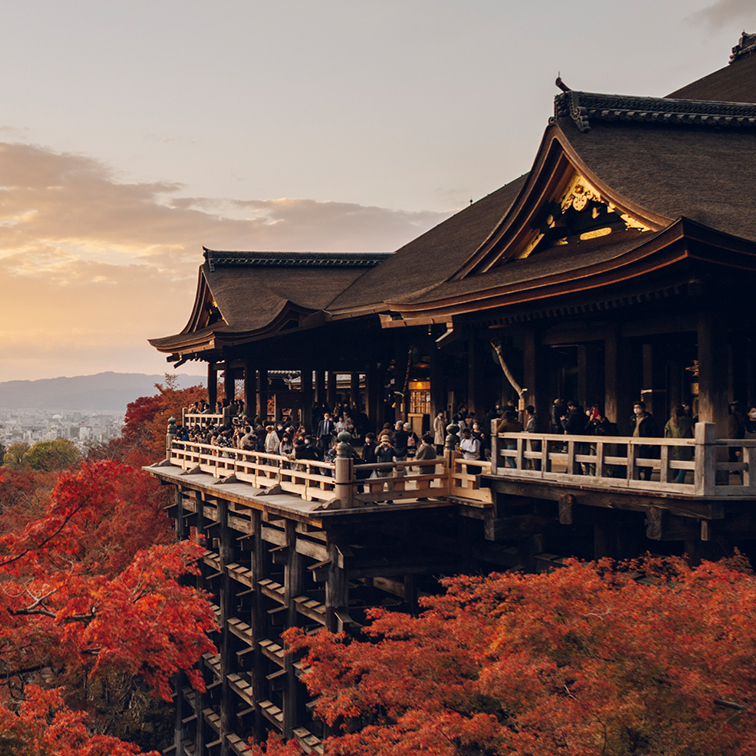
Located about a 15-minute walk from Yasaka Shrine, Kiyomizu-dera Temple is one of Kyoto’s most famous temples, founded in 778.
It is registered as a UNESCO World Heritage Site and is known as the birthplace of the phrase “jumping off the stage at Kiyomizu. “
The main hall is a huge 13-meter-tall wooden stage structure, a masterpiece of architectural technology built using traditional methods without the use of a single nail.
From the stage you can get a panoramic view of Kyoto city, which is particularly spectacular during the spring cherry blossom season and autumn foliage season.
Kiyomizu-dera Temple also has many attractions such as Otowa Falls and Jishu Shrine, and is popular as a power spot for romantic and academic success.
Within the grounds, there are old streets called Sannenzaka and Ninenzaka, allowing you to enjoy a stroll along the approach to the shrine with a charming Kyoto atmosphere.
Kodaiji Temple

Kodaiji Temple was founded in 1606 by Toyotomi Hideyoshi’s wife, Kita no Mandokoro (Nene), to commemorate the death of her husband.
It features beautiful gardens and architecture representative of Momoyama culture, and has been designated a national historic site and place of scenic beauty.
In the Kirishima Garden, which connects the Hojo and Kaisan-do Hall, there are two large stones representing Toyotomi Hideyoshi and his wife, Kita no Mandokoro, which are considered symbols of marital harmony.
Additionally, the bamboo forest, one of the attractions of Kodaiji Temple, is known as a mysterious space woven together by the rustling of bamboo swaying in the wind and light.
In spring and autumn, the temple is lit up at night, creating a fantastical sight that is different from that during the day.
The temple is especially popular with female worshippers as it conveys the kind personality of Kita no Mandokoro.
Kenninji Temple
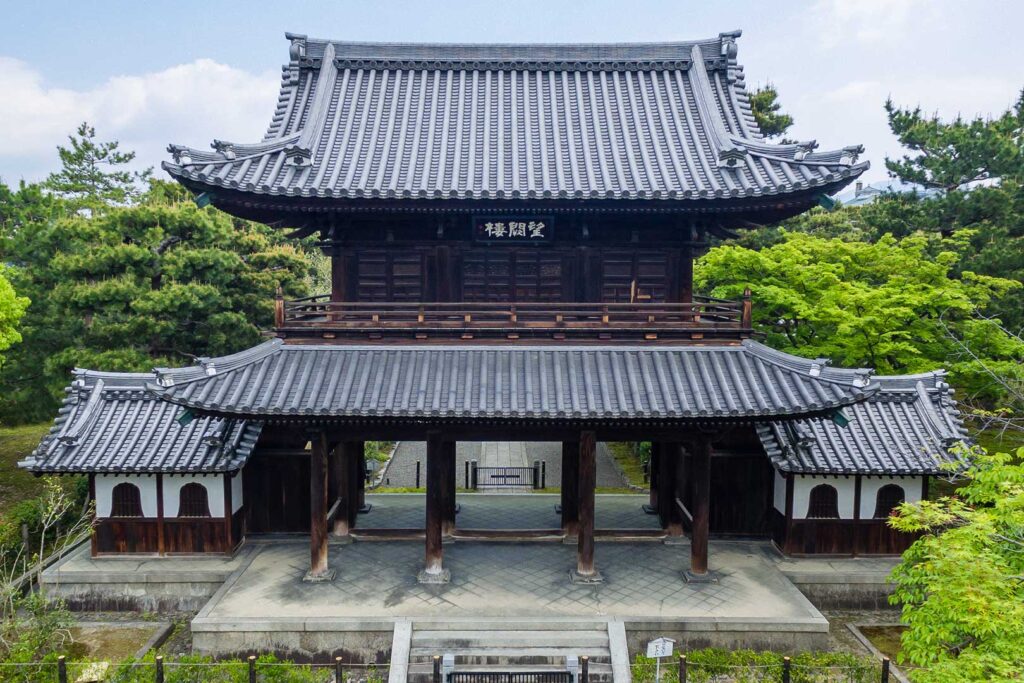
Kenninji Temple, located about a 7-minute walk away, is Kyoto’s oldest Zen temple, founded in 1202 .
It was founded by Zen master Eisai as the head temple of the Kenninji school of the Rinzai sect of Buddhism.
The “Two Dragons” painting on the ceiling of the lecture hall is a work by contemporary Japanese painter Junsaku Koizumi, and the impressive sight of the two swirling dragons is sure to impress anyone who sees it.
Also, the copy of the “Wind Gods and Thunder Gods Screen” in the Hojo is a must-see.
Kenninji Temple’s garden, Daiyuen, is a beautiful space where a white sand rock garden and a lush green garden come together in harmony, and shows different faces throughout the seasons.
In the tranquil grounds, you can also experience zazen (reservation required), allowing you to spend some precious time quieting your mind away from the hustle and bustle of everyday life.
This temple offers a tranquil experience of the world of Zen, in stark contrast to the bustling atmosphere of Yasaka.
FAQs about Yasaka Shrine
summary
Yasaka Shrine, located in Higashiyama in the ancient capital of Kyoto, is a historic shrine known as the venue for the Gion Festival.
It has a history of over 1,300 years since its founding, and is affectionately known as “Gion-san” by locals, who believe it brings good fortune in warding off evil, curing illness, and bringing prosperity to business.
The beautiful vermilion shrine building and the scenery that changes with the seasons, especially during the cherry blossom and autumn foliage seasons, captivate all visitors.
There are many temples and shrines in the area, including Kiyomizu-dera and Kodai-ji, making it a fun spot to enjoy all day long as it is the center of Higashiyama tourism.
In particular, the Gion Festival in July is an unmissable Kyoto event and a rare opportunity to experience traditional Japanese culture.
If you visit Kyoto, be sure to experience history and culture at Yasaka Shrine.
